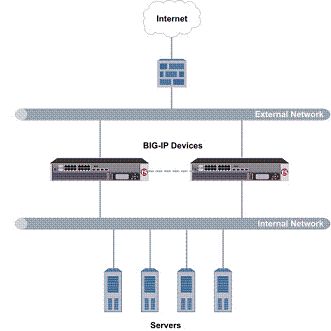Introduction
An F5 BIG-IP load balancer distributes the processing and communications activity evenly across groups of servers in a network, so that no single server is overwhelmed. The BIG-IP load balancer keeps a constant check on the incoming and outgoing traffic of the servers in the server pools. By default, it will route the user requests to the most available server that can best handle them (see Figure 1). Moreover, the load balancer maintains network connectivity along multiple ISP paths, and thus ensures high availability of the servers in a pool.

Figure 1 : How the BIG-IP load balancer works?
Since it plays a critical role in an Internet facing IT infrastructure, even a slight deterioration in the performance of a load balancer can adversely impact the critical IT services of an enterprise, thereby resulting in considerable revenue loss. In order to prevent such adversities, it is imperative that BIG-IP load balancers are continuously monitored. This where the eG Enterprise helps administrators!
